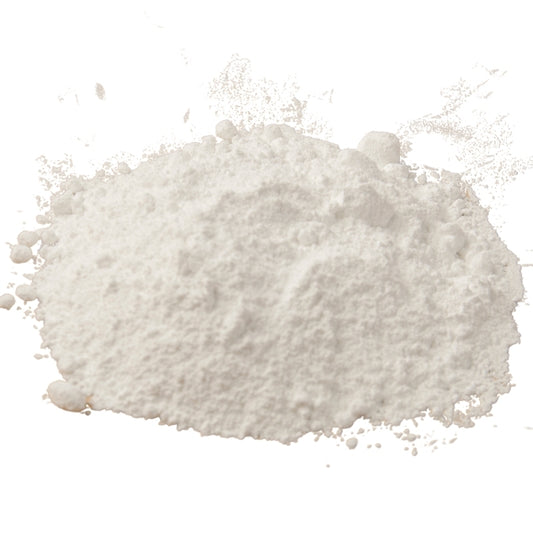
Understanding Sun Protection: A Guide for South Africans as the Weather Warms Up
Cayla MandeanIt is heating up, and we don't know about you, but for us, Spring often feels like an early taste of Summer in parts of South Africa. The warm, sunny days is calling us outdoors. Activities like swimming, picnics, gardening, braaiing and unleashing your inner child with slip-n-slides are some of the joys of the season. While the summer-fun bucket list may already be on your mind, it also comes with a heightened need for skin protection.
The warmer weather and UV rays increase the risk of sun damage, which can show up in the form of sunspots, premature aging, and other serious skin diseases. Whether you're dealing with intense summer sun or a deceptively overcast day, we want to beat the effects of chronic exposure to sunlight. No matter our skin tone, we must stay sun-safe as we transition into summer. So, what does this all mean? Let's dive in.
What are Sunspots?
Sunspots, also known as solar lentigines or age spots, are small, flat dark areas on the skin caused by chronic exposure to ultraviolet (UV) radiation from the sun. They typically appear on areas most exposed to the sun, such as the face, hands, and arms. While sunspots are generally harmless, they are a visible sign of cumulative sun damage and can indicate years of sun exposure.
South Africa's intense sun means that protecting your skin is vital.
The Science: Why Sun Protection is Important
The link between UV exposure and skin damage is well-documented. UVB rays are primarily responsible for sunburn, while UVA rays penetrate deeper into the skin, causing long-term damage like premature aging and sunspots. Both types of radiation contribute to skin cancer risk, making broad-spectrum protection a must. We cover more of this in a previous blog here.
You can also explore a reading that we found very important here. It is on the ABCDE guide and obtaining professional medical advice regarding spots and moles.
Although the risk of sun exposure increases in the summer due to higher UV levels, sun protection remains important even on cloudy days. Up to 80% of UV rays can still pass through clouds, leaving your skin susceptible to sunburn, sunspots, and long-term skin damage. So, be sure to use sun protection all year-round regardless of the weather.
It's also fascinating to note that, according to research, UV exposure accounts for about 80% of visible skin aging. We often associate wrinkles, fine lines, sunspots, and loss of skin elasticity as a natural part of aging (which is a blessing in itself and evidence of wisdom) however, we want to have the opportunity to age well. This means, maintaining a healthy complexion and a healthy body. Part of the process of aging well is consistently protecting your skin from UV rays through holistic sun safety tips.
3 Holistic Sun Safety Tips:
- Wear Protective Clothing: Lightweight, natural fabrics like linen are breathable and offer protection. Look for wide-brimmed hats and even consider UV-filtering sunglasses, to protect your eyes and skin.
- Stay in the Shade: Avoid direct sun exposure during peak hours, and always have a sun umbrella or a light shawl on hand when you're outdoors.
- Apply Sunscreen Generously and Often: Reapply every two hours, especially after swimming or sweating. Use at least a teaspoon of sunscreen on your face and more on your body, and aim for a minimum of SPF 30+.
The Link Between the Sun and Overall Wellness
While the sun can cause damage, it also plays a vital role in our overall health by stimulating the production of Vitamin D in the skin, which is important for bone health, immune function, and mood regulation. However, it's important to balance the need for sunlight with adequate protection. To maintain healthy Vitamin D levels, it's advisable to spend at least 10-20 minutes in the sun, a few times a week. Try and avoid peak UV times (10 AM to 4 PM). Regardless of the time of day, though, be sure to take protective measures whenever there is daylight.
What Sun Protection Should I Use?
Traditional chemical sunscreens can contain ingredients that not only irritate sensitive skin but also have a detrimental impact on marine ecosystems when washed off into the ocean. Instead, we would like to highlight some alternatives.
Mineral Sunscreens/ Physical Blockers: Mineral sunscreens with ingredients like non-nano zinc oxide and titanium dioxide provide a physical barrier against UV rays. These minerals sit on the skin's surface and reflect harmful radiation away, offering protection without chemical absorption into the skin.
Antioxidant-Rich Skincare: Incorporating antioxidants like Vitamin C, green tea extract, and ferulic acid into your skincare routine can further protect your skin from sun damage. Antioxidants neutralise free radicals generated by UV exposure, helping to reduce inflammation and preventing cellular damage. Naturally-derived oils such as carrot seed oil or red raspberry seed oil are rich in antioxidants and offer additional protection when combined with sunscreen.
Seasonal Skincare Adjustments
As the temperature rises and humidity levels change, your skin's needs will also shift. Here are a few natural skincare tips to help you adjust:
Lighten Your Routine: Warmer weather often commands lighter, breathable skincare products. Switch out heavy creams for lightweight moisturisers which hydrate without clogging pores. We've covered a lovely aloe daily moisturiser recipe which you can try here.
Hydration: As the heat increases, so does the potential for dehydration, both internally and externally. Hydrate your skin and draw in moisture by incorporating humectants like hyaluronic acid. Drink plenty of water and electrolytes and try sipping on a cold peppermint tea.
Gentle Exfoliation: Over-exfoliating can leave your skin vulnerable. Opt for gentle, natural exfoliants. These will help remove dead skin cells while stimulating new cell growth. Explore some at-home recipes here.
Protect and Repair: Using natural after-sun care can repair and nourish your skin after a day outdoors. Try our all-natural after-sun recipe below to soothe sun-exposed skin.









